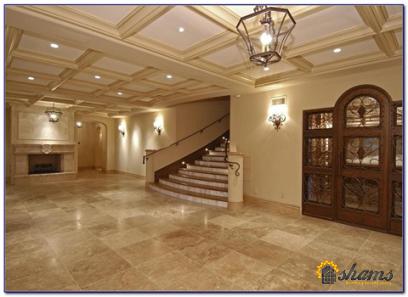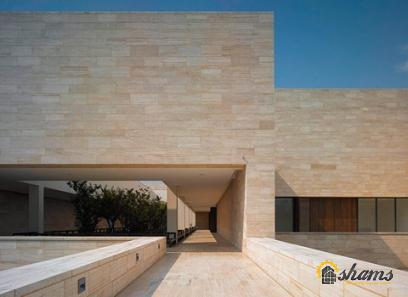When it comes to architectural design, the facade plays a pivotal role in defining a building’s aesthetics and character. One material that exudes elegance, durability, and timelessness is hard stone. With its rich textures, natural colors, and ability to withstand the test of time, hard stone facades have become increasingly popular among architects and developers. In this article, we will explore the benefits, design considerations, and maintenance aspects of incorporating hard stone facades into your projects. 1. Unmatched Durability and Strength: Hard stone, such as granite, limestone, or marble, is renowned for its exceptional durability and strength.

.
 Its resistance to severe weather conditions, including high winds, extreme temperatures, and UV radiation, makes it an excellent choice for facade materials. Buildings clad with hard stone facades can withstand the elements and maintain their stunning appearance for decades, providing long-term cost savings. 2. Timeless Aesthetics: Hard stone facades are revered for their timeless aesthetics. The unique patterns, textures, and colors inherent in each stone slab create an exceptional visual impact. From the classical elegance of marble to the raw, modern appeal of granite, the versatility of hard stone allows architects to create facades that blend seamlessly with various architectural styles, making them suitable for both historic restorations and contemporary designs. The natural beauty of hard stone adds a touch of sophistication and refinement to any building.
Its resistance to severe weather conditions, including high winds, extreme temperatures, and UV radiation, makes it an excellent choice for facade materials. Buildings clad with hard stone facades can withstand the elements and maintain their stunning appearance for decades, providing long-term cost savings. 2. Timeless Aesthetics: Hard stone facades are revered for their timeless aesthetics. The unique patterns, textures, and colors inherent in each stone slab create an exceptional visual impact. From the classical elegance of marble to the raw, modern appeal of granite, the versatility of hard stone allows architects to create facades that blend seamlessly with various architectural styles, making them suitable for both historic restorations and contemporary designs. The natural beauty of hard stone adds a touch of sophistication and refinement to any building.
..
 3. Design Considerations: When incorporating hard stone facades into your architectural designs, careful consideration must be given to factors such as the building’s environment, structural support, and installation methodology. a. Environment: Understanding the climate, pollution levels, and geological conditions at the project site is crucial. This knowledge will help select the most suitable type of hard stone that can withstand environmental challenges and still retain its aesthetics over time. b. Structural Support: Hard stone facades are heavier than other facade materials, requiring proper structural support and load calculations during the design phase. Consulting with a structural engineer is essential for ensuring the facade’s stability and safety. c. Installation Methodology: Due to the weight and natural irregularities of hard stone slabs, installation requires skilled craftsmen with expertise in stonework. Engaging experienced contractors who specialize in hard stone facade installations is critical to achieving the desired result.
3. Design Considerations: When incorporating hard stone facades into your architectural designs, careful consideration must be given to factors such as the building’s environment, structural support, and installation methodology. a. Environment: Understanding the climate, pollution levels, and geological conditions at the project site is crucial. This knowledge will help select the most suitable type of hard stone that can withstand environmental challenges and still retain its aesthetics over time. b. Structural Support: Hard stone facades are heavier than other facade materials, requiring proper structural support and load calculations during the design phase. Consulting with a structural engineer is essential for ensuring the facade’s stability and safety. c. Installation Methodology: Due to the weight and natural irregularities of hard stone slabs, installation requires skilled craftsmen with expertise in stonework. Engaging experienced contractors who specialize in hard stone facade installations is critical to achieving the desired result.
…
 4. Maintenance and Care: While hard stone facades are incredibly durable, it is important to maintain and care for them properly to preserve their beauty. Routine cleaning using non-abrasive, pH-neutral cleaners will help remove dirt, dust, and pollutants without harming the stone. Periodic sealing is also recommended to protect the stone from staining and moisture infiltration. Regular inspections should be performed to address any potential issues, such as cracks or dislodged stones, to ensure the facade’s longevity. Conclusion: As architects and developers strive to create inspiring buildings that stand the test of time, hard stone facades emerge as a popular choice for their unmatched durability, timeless aesthetics, and exceptional strength. The unique qualities offered by hard stone materials contribute to the overall character and visual appeal of a building, making it an excellent investment for both new constructions and architectural restorations. Understanding the design considerations and maintenance aspects is crucial for successfully incorporating hard stone facades into your projects and ensuring their long-lasting beauty.
4. Maintenance and Care: While hard stone facades are incredibly durable, it is important to maintain and care for them properly to preserve their beauty. Routine cleaning using non-abrasive, pH-neutral cleaners will help remove dirt, dust, and pollutants without harming the stone. Periodic sealing is also recommended to protect the stone from staining and moisture infiltration. Regular inspections should be performed to address any potential issues, such as cracks or dislodged stones, to ensure the facade’s longevity. Conclusion: As architects and developers strive to create inspiring buildings that stand the test of time, hard stone facades emerge as a popular choice for their unmatched durability, timeless aesthetics, and exceptional strength. The unique qualities offered by hard stone materials contribute to the overall character and visual appeal of a building, making it an excellent investment for both new constructions and architectural restorations. Understanding the design considerations and maintenance aspects is crucial for successfully incorporating hard stone facades into your projects and ensuring their long-lasting beauty.











Your comment submitted.